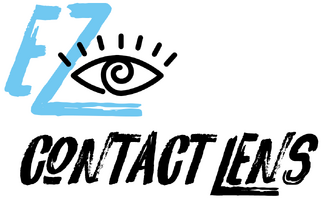$10 dollars off for first time purchase with "10OFF"
How to Safely Observe a Solar Eclipse
How to Safely Observe a Solar Eclipse
Experiencing a solar eclipse is an awe-inspiring event that captivates people worldwide. This holds even greater excitement as it can create the mesmerizing phenomenon known as the "Ring of Fire." However, it is crucial to remember that looking directly at the sun, even during an eclipse, can cause severe harm to your eyes.
This article delves into the science behind solar eclipses, the risks associated with improper viewing, and most importantly, provides guidance on how to safely observe this breathtaking phenomenon.
Understanding Solar Eclipses
Before discussing safety measures, it is helpful to understand the science behind solar eclipses. These occur when the moon's shadow falls upon the Earth's surface, resulting in a brief period of darkness during the day. There are three primary types of solar eclipses:
-
Total Solar Eclipse: The moon completely covers the sun, transforming day into night for a few minutes. This remarkable spectacle reveals the sun's corona, creating a visually stunning display.
-
Partial Solar Eclipse: The moon covers only a portion of the sun, forming a crescent-shaped sun visible to observers. This is the most commonly observed type of solar eclipse.
-
Annular Solar Eclipse: This type, like the one happening on October 14th, occurs when the moon covers the central part of the sun, leaving a ring-like appearance around the edges.
What is the Ring of Fire?
During an annular solar eclipse, the moon is farther from the Earth than usual, resulting in the sun not being completely covered. Instead, as the moon moves in front of the sun, it creates the illusion of a dark circle placed over it. Since the sun is larger, the uncovered portion appears as flames, temporarily forming a "ring of fire" effect that lasts for one to five minutes.
Hazards of Directly Observing a Solar Eclipse
While solar eclipses are captivating, they can pose significant risks to your eyes if not observed safely. Even a few seconds of direct sun exposure during an eclipse can lead to severe eye damage, including conditions like photokeratitis, solar retinopathy, and even permanent blindness.
Symptoms of Photokeratitis
Photokeratitis refers to a sunburn-like condition that affects the cornea, the clear front surface of the eye. Common symptoms include pain, redness, a gritty feeling in the eyes, excessive tearing, extreme sensitivity to light, and temporary vision loss.
Symptoms of Solar Retinopathy
Solar retinopathy occurs when the sun's intense light damages the cells in the retina, the part of the eye responsible for converting light into electrical signals. This condition is rare but dangerous. The most noticeable symptom is a "blind spot" (scotoma) in one or both eyes. Other associated symptoms include headaches, altered color perception, distorted or warped vision, and objects appearing smaller than their actual size.
One significant danger of solar retinopathy is that the retina lacks pain receptors, so damage may not be immediately apparent. Symptoms typically manifest within hours of the retinal damage occurring.
Safest Methods to Observe a Solar Eclipse
Thankfully, there are safe techniques to observe a solar eclipse without risking eye damage. Here are some recommended methods:
-
Solar Eclipse Glasses: These specialized glasses have a solar filter that blocks harmful solar radiation. Ensure that your eclipse glasses are obtained from a reputable source and carry the ISO 12312-2 safety certification, which guarantees eye protection.
-
Handheld Solar Viewers: Similar to eclipse glasses, handheld solar viewers are held in front of your eyes, providing a clear view of the eclipse while safeguarding your eyes.
-
Pinhole Projection: This do-it-yourself option involves creating a pinhole projector using two sheets of white cardboard or paper. By making a small hole in one sheet, you can hold it up to the sun, allowing the light to pass through the hole and project an image of the eclipse onto the second sheet.
-
Live Streams and TV Coverage: If you lack proper viewing equipment or if the eclipse is not visible from your location, many organizations and websites offer live streams and television coverage of solar eclipses. This is a safe and accessible way to enjoy the event.
-
Attend an Eclipse Viewing Event: Science centers, planetariums, and astronomy clubs often organize public eclipse viewing events, providing appropriate equipment and expert guidance for a safe experience.
Regardless of the method you choose to observe the upcoming solar eclipse, remember that regular sunglasses, no matter how dark, do not offer sufficient protection against eye damage. It is also essential to closely supervise children and keep pets indoors during the eclipse to prevent them from looking directly at the sun and harming their vision.
Prioritize Vision Health and Safety
While a solar eclipse is a captivating natural phenomenon that has fascinated humans for centuries, it is crucial to prioritize the safety of your eyes during the observation. The sun's intense rays can cause irreversible damage, so always use proper equipment such as eclipse glasses, handheld viewers, or projection methods. By taking these precautions, you can marvel at the wonder of a solar eclipse without compromising your vision.
Remember, your eyes are precious, so protect them while enjoying this month's or any future solar eclipse!
Display prices in:SGD
